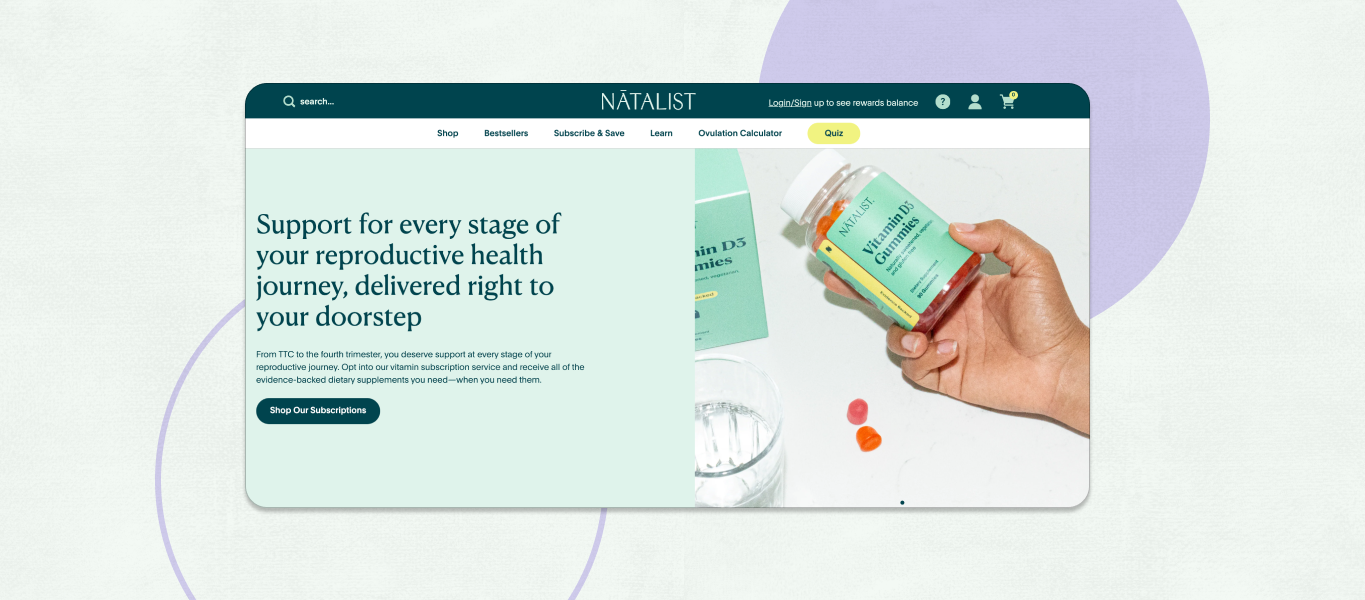With the rise of ecommerce, shopping has moved away from brick and mortar stores and onto screens. These days, most shopping is taking place on the internet of things—computers, mobile phones, social channels, even smart speakers. It’s essential that businesses can adapt their platforms quickly to meet customers on these new touchpoints.
Another trend in ecommerce is the rise of subscriptions. In the same way the internet revolutionized shopping, subscription models are transforming it as well. Subscriptions bring convenience and ease to customers, while enabling businesses to gather data and grow revenue. More businesses are adapting their approaches to include subscription offerings, and to continue to meet customer needs.
Now we’re seeing established global consumer brands refine their traditional direct to consumer models to offer subscription product and services. James Holding, Managing Director of Little Vitamin

As businesses refine their models, they’re also addressing their systems. In order for a system to really maximize its potential, it’s best to minimize barriers for progress, remove roadblocks, and give the system ample room to reach its peak. For example, this is true in engineering.
I’ve found that many top engineers are obsessed with a best practice called “Separation of Concerns.” This principle breaks a computer system down into distinct sections so each section can excel at its specialized job.
Brian Anderson, Founder & CEO, Nacelle
And the same principle applies for businesses looking to boost flexibility, freedom, and velocity on their platform. In ecommerce, a headless build enables companies to separate the front end and back end of their website. With this split, the front end and back end become independent components, and this opens up a world of possibilities. We chatted with some partners from leading agencies on why headless is beneficial and how it’s changing the future of ecommerce.
What is headless?
Let’s quickly review the different parts of a site:
Front end: This is what users interact with, the look and feel of a site. Everything that you see navigating the internet is the frontend of a site—from fonts to drop down menus.
Back end: This is what’s under the hood, where everything works—the server side and everything that communicates between the database and the browser.
Think about it like this. The front end is what your customers see and the back end is what your developers manage. It’s important that the front end is optimized, as customers expect engaging and intuitive web experiences. However, you don’t want to sacrifice the actual functioning of the site. Google found that 53% of mobile website visitors will leave if a webpage doesn’t load within three seconds. Headless architecture solves for both of these issues—it creates the conditions for delivering a great user experience without compromising code.
Headless Commerce requires businesses to transform their thinking about technology from ‘what technology fits most of our needs?’ to ‘what technologies solve all of our needs the best?’
Scott Knight, CEO, Alpha Omega Agency
In short, headless separates key functionality into the front end and the back end. For merchants, this means increased flexibility, and a shorter turnaround time for creating new experiences. For customers, this means a truly comprehensive omnichannel experience.
The benefits of headless
Testing
With a headless build, companies can rapidly test and iterate. Since they aren’t compromising the integrity or functioning of the back end, they’re free to experiment with the front end. Let’s say you’re trying out a new element on the home page or working to upgrade the user experience for online shopping. With headless, you have full range to run tests, tweak, and make improvements—all without worrying about interfering with the back end of your site.
Through implementing a custom headless solution, we were able to iterate quickly on the front-end and react to user feedback much faster than doing a build out in a traditional ecommerce template structure.
Tate Lucas, CEO, Dotdash
Integration with APIs
Headless commerce platforms use application programming interfaces (APIs), which are software intermediaries that let two applications talk to each other. With headless, you can create a “best of breed” tech stack that fits your business’s unique needs. You have control to choose which capabilities you want and can create a custom suite of backend technologies. And, if you need to make changes, you can switch out applications easily.
More and more ecommerce businesses require many systems to scale their business and they need a unified frontend experience to connect all of them.
Isaiah Bollinger, CEO, Trellis
Conversions
With headless, you can minimize the friction for customers to “convert.” Since multiple front ends can be connected to the same back end, you can manage multiple user experiences across a variety of devices. For example, let’s say your customer encounter your brand on social media. With a progressive web app (PWA) solution, you can bring them directly from clicking on your ad to your store. Once there, customers don’t have to load again until they’re ready to checkout. They aren’t dealing with lagging web pages and a bunch of extra clicks, all steps that add time and friction to their process.
With headless, you can boost speed, improve the user experience, and make shopping simple. All of these factors contribute to more conversions, and long term customer loyalty. Your platform can continue to be flexible and meet your customers where they’re shopping.
Customers now anticipate that buying can be a convenient, quick, and pleasant experience done from the comfort of your couch or between bus stops on your commute home.
Anna Gallo, Developer, The Taproom
Innovation
Years ago, monolithic applications handled multiple tasks with tightly coupled functions. For example, a monolithic ecommerce application likely would have included a web server, ordering system, payment function, and shipping component. With this massive and intricate code base, making even a tiny change would have required testing the entire platform.
Headless solved for the lengthy implementation and hefty costs to labor and time. Today, headless allows for a website to move forward quickly. Developers can complete simple and time-sensitive tasks, like displaying a holiday promotion for the front-end user experience, without risking messing up the code. Looking towards the future, merchants need a website that is both highly functioning and highly customizable. A headless build opens the doors for engineering innovation and flexibility today, and outfits you with the freedom to adapt tomorrow.
Headless ecommerce has been a movement in the making for the past few years, and it’s time for it to be the new golden standard moving forward in the digital commerce space.
Sergiu Tabaran, Ecommerce Specialist, Absolute Web
Is headless right for you?
While headless is an excellent standard to work towards, it makes sense for businesses to implement once they’re looking to optimize. A headless build can be complex, so you’ll need development a nd engineering teams to support the process. It’s necessary that developers can upkeep the build, but if you have the resources and capacity, it can future-proof your platform to excel.
Not only will you be able to deliver a blazing fast and personalized omni-channel experience to your customers right now, but you’ll be poised to quickly pivot and stay ahead of the curve as technology and consumer behaviors evolve.
Anna Gallo, Developer, The Taproom
For more on headless builds, check out this post diving deeper into the omnichannel approach.



